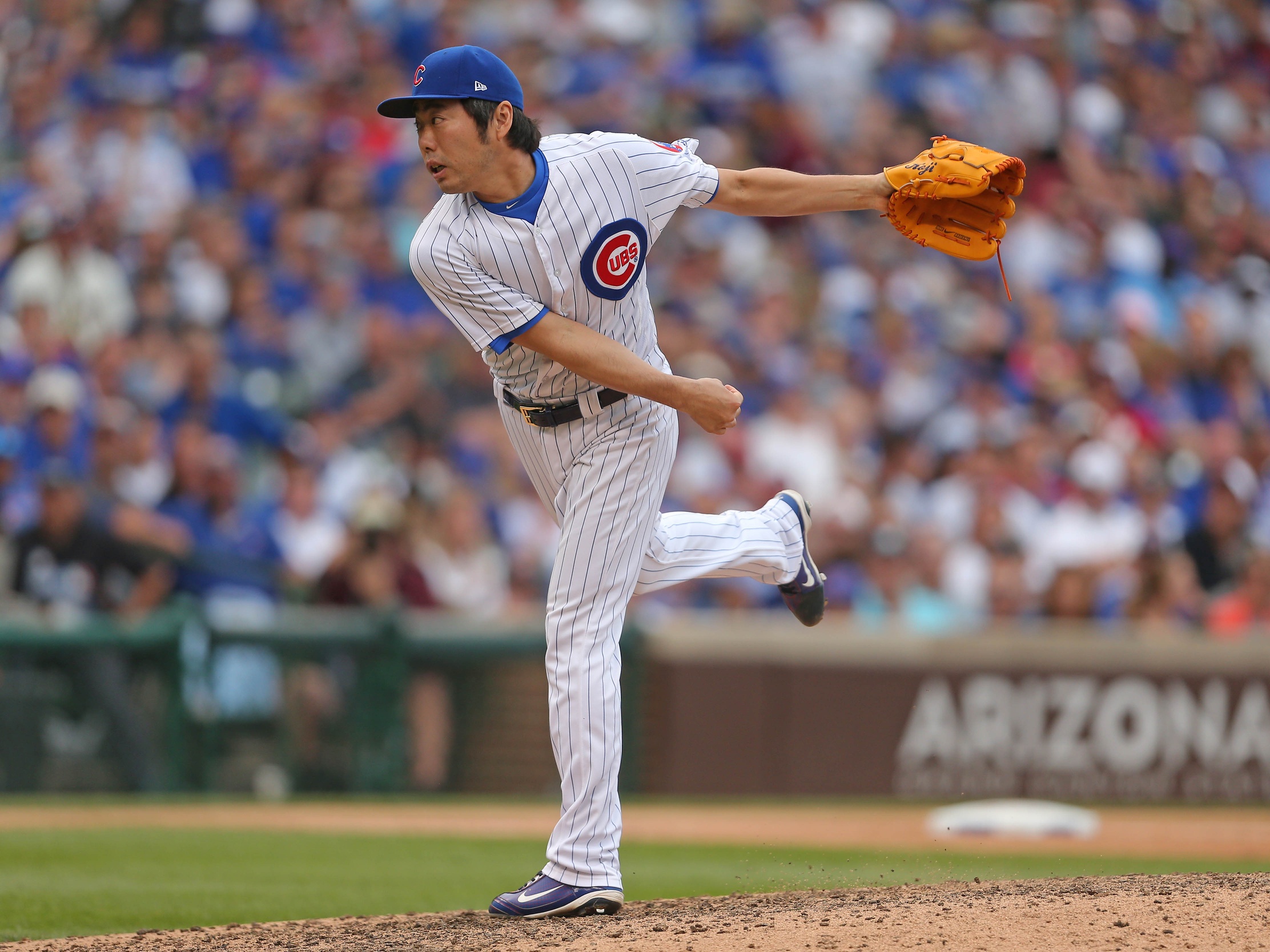Position: Relief Pitcher
2017 Stats: 3-4, 2 saves, 3.98 ERA/3.80 FIP/3.78 DRA, 94 cFIP, 10.5 K/9, 2.5 BB/9, 0.7 WARP
Year in Review: For the second consecutive season, the Cubs took a chance on a reliever in his 40s. In fact, they employed not only one, but two past-their-30s bullpen arms in Joe Nathan and Joel Peralta last year. The 2016 pair didn’t contribute much, as they combined to toss a mere 6.0 innings, despite Nathan’s 0.00 ERA.
The Cubs, however, got much more value out of their 2017 bet, as Koji Uehara posted the solid DRA, K/9, and BB/9 marks listed above, nearly matching his pre-season PECOTA projections (3.76, 10.1, 2.2, and 40, respectively).
Unfortunately, the veteran reliever fulfilled expectations in a bad way, too. After spending 10 days on the DL with a strained neck, he missed the final month of the regular season and the entirety of the playoffs to back and right knee issues, limiting his innings total to the 40s for the third consecutive season.
However, 43 innings was enough for Uehara to accomplish a historic feat. At the age of 42, he became the oldest Cubs pitcher to top the 40 innings threshold since 1953, when Dutch Leonard threw 62.2.
As I noted above, he didn’t just accumulate innings. He did it with quality. His 21.4 K%-BB% ranked second-best among pitchers who threw at least 40 innings in their age 42-or-older season, dwarfed only by 2007 Randy Johnson. In some senses, Uehara’s 2017 was Hall of Fame-worthy, or at least historically notable.
The source of his success was what he’s been known for throughout his career: the effectiveness of his fastball. This past season, batters swung at 52.48 percents of his four-seam fastballs. And when they did, he induced whiffs more than a quarter of the time, resulting in a 28.83 percent whiff per swing rate, the 21st-highest mark among 206 relievers who threw at least 200 four-seamers. He produced these rates while averaging 87.10 miles-per-hour on the four-seamer, slowest by more than a full tick among those 206 relievers.
But he did show signs of decline. After hovering below three for the entity of the decade, his DRA jumped up to 3.78, the worst mark since he moved to the bullpen full-time in 2010. Similarly, he scored the worst records in cFIP, TAv allowed, and WHIP in his time as a reliever.
Those declining numbers, ever-declining fastball velocity, and injury concerns notwithstanding, he remains an effective middle reliever. And it’s incredible, if not historic considering that he’s doing so at the age where most people spend weekends lying on the couch.
Looking Ahead: With his one-year contract with the Cubs expiring, Uehara hits the market again. In his recent blog post, he expressed that he has no plans going forward and is considering hanging up the cleats if he doesn’t get an offer.
But I can see him signing another one-year major-league deal, either with another club or returning to the Cubs, given the lack of depth in the front end of North Side’s pen. His destination in 2018 unknown, but I don’t think he’s thrown his final pitch in the big leagues.
Lead photo courtesy Dennis Wierzbicki—USA Today Sports
